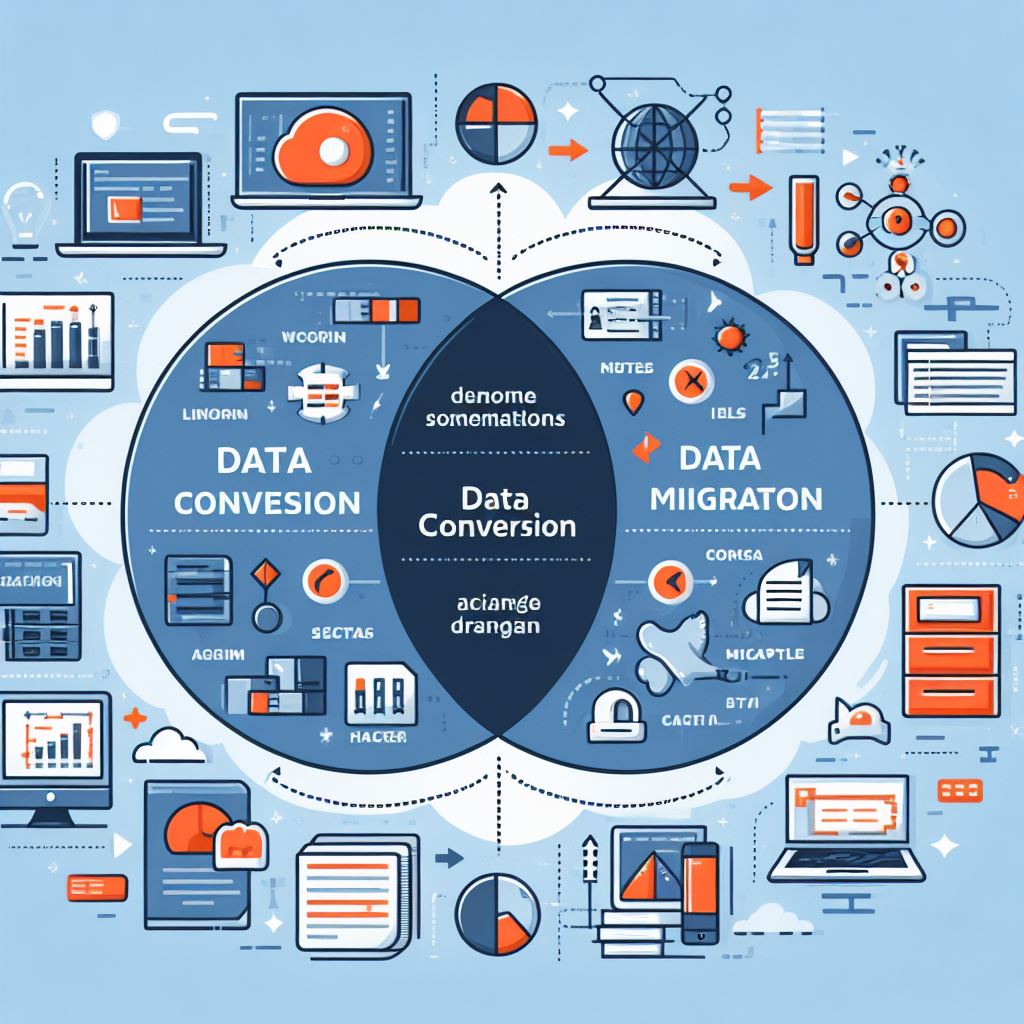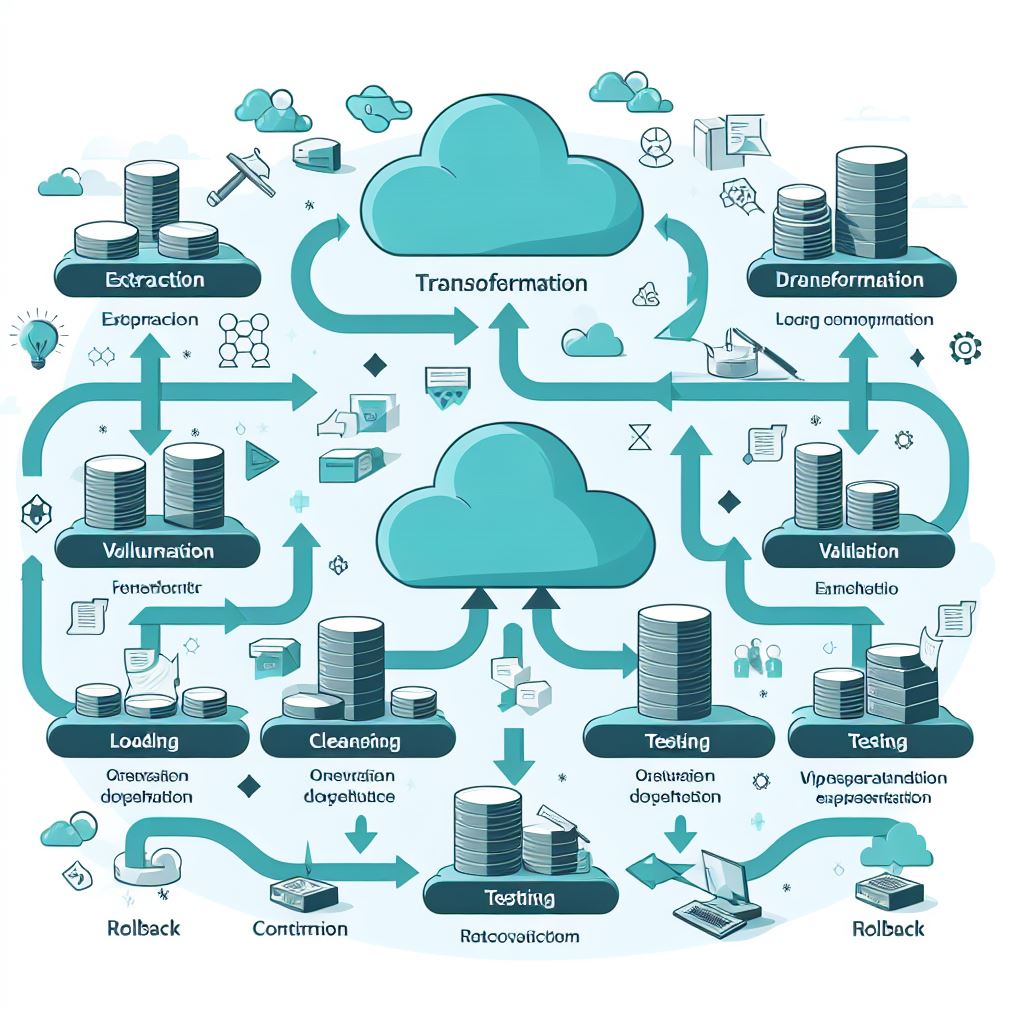When it comes to the realm of data management, businesses face the challenge of efficiently handling data conversion and data migration processes. Understanding the nuances and disparities between the two is imperative for ensuring successful data handling. Data conversion and data migration are distinct processes, each with its own set of complexities and requirements.
Contents
- 1 What is Data Conversion?
- 2 What is Data Migration?
- 3 Differences between Data Conversion and Data Migration
- 4 Challenges in Data Conversion Vs Data Migration
- 5 Best Practices for Data Conversion and Data Migration
- 6 Frequently Asked Questions [FAQs]
- 6.1 Q: What is the difference between data migration and data conversion?
- 6.2 Q: How does the data migration process differ from the data conversion process?
- 6.3 Q: Can you explain the types of data involved in data migration and conversion?
- 6.4 Q: What are the key considerations for data migration and conversion?
- 6.5 Q: Is data conversion often part of the data migration process?
- 6.6 Q: What role does an ETL tool play in data migration and conversion?
- 6.7 Q: How does data security factor into data migration and conversion?
- 6.8 Q: What are the potential risks associated with data migration and conversion?
- 6.9 Q: What is the main goal of data migration?
- 6.10 Q: How can inaccurate data be addressed during data migration and conversion?
- 7 Conclusion
What is Data Conversion?

Data conversion is the transformation of data from one format to another, such as converting data from the source system to a new system. It involves a comprehensive change in the way data is represented, ensuring compatibility with the target system. The process of data conversion includes converting the types of data, ensuring data quality, and adapting the data to fit the target system.
Understanding data conversion
Understanding data conversion involves recognizing the nature of the source data and its structure. It requires deciphering the different data formats and types present in the source data.
Conversion process
The conversion process involves utilizing technologies or specialized tools to facilitate the conversion of data from one format to another. This is often executed by employing ETL (Extract, Transform, Load) tools or similar methodologies to ensure a smooth conversion process.
Data validation in conversion
Data validation plays a crucial role in data conversion to ensure that the data being converted adheres to the required format and structure. It involves verifying and validating data to prevent any potential issues that may arise from inaccurate or incomplete data.
What is Data Migration?
Data migration, on the other hand, involves the process of moving data from the source system to the target system. This process entails the seamless transfer of data while ensuring its integrity and consistency. Data migration encompasses the data cleansing, transformation, and integration required for successful data transfer.
Migration process
The migration process focuses on recasting data from the source system and migrating it to the new system. This requires meticulous planning and execution to ensure a smooth transition of the data with minimal disruptions to the business operations.
Data cleansing in migration
Data cleansing is critical in the migration process as it involves identifying and rectifying any errors or inconsistencies in the source data. This ensures that the migrated data is accurate and reliable for use in the new system.
Data Conversion Vs Data Migration
While both processes involve moving and modifying data, it’s essential to differentiate between data migration and data conversion. Data migration primarily focuses on the movement and integrity of the data, ensuring a seamless transfer to a new system. Conversely, data conversion is centered around transforming the format or structure of the data to fit the requirements of the target system.
Differences between Data Conversion and Data Migration

Understanding the disparities between data conversion and data migration is crucial for effectively managing each process and ensuring successful outcomes. Several key differences distinguish the two processes, including the type of data involved, the quality of the data, and the target system requirements.
Data type in conversion vs migration
Data conversion involves the transformation and modification of the data types to suit the target system, while data migration focuses on transferring the existing data types to the new system without altering their fundamental structure.
Data quality in conversion vs migration
In data conversion, ensuring data quality involves validating and cleansing the data to meet the standards of the target system, whereas, in data migration, data quality is maintained during the transfer to ensure the integrity and reliability of the migrated data.
Target system in conversion vs migration
The target system in data conversion requires the data to be adapted and modified to fit the specific requirements of the new system, while in data migration, the emphasis lies on seamlessly integrating the existing data into the new system without significant alterations.
Challenges in Data Conversion Vs Data Migration
Both data conversion and data migration pose unique challenges that organizations need to navigate effectively to ensure the successful transition and utilization of data. These challenges encompass the transformation of data from one format to another, efficient data management, and the impact of legacy systems on both processes.
Data from one format to another
The conversion of data from one format to another presents challenges related to interpreting and modifying the existing data structure to align with the requirements of the new system, often necessitating extensive data transformation and restructuring.
Data management in conversion and migration
Effective data management is crucial in both data conversion and data migration processes, ensuring that the data is handled and transferred efficiently while maintaining its accuracy and completeness.
Legacy system impact on conversion and migration
The presence of legacy systems can significantly impact both data conversion and data migration processes, requiring careful consideration of the compatibility and integration challenges posed by these systems.
Best Practices for Data Conversion and Data Migration

Implementing best practices is essential for navigating the complexities of data conversion and migration to achieve successful outcomes. These practices encompass minimizing disruptions during data migration, effective data mapping, and rigorous data validation and testing.
Migrate data with minimal disruption
Minimizing disruptions during data migration involves meticulous planning and execution to ensure that the business operations are minimally affected during the transition to the new system.
Data mapping for conversion and migration
Comprehensive data mapping is critical for both data conversion and data migration, as it facilitates the alignment of the source data with the requirements of the target system, ensuring a seamless and accurate transfer of data.
Data validation and testing
Rigorous data validation and testing are essential components of both data conversion and data migration processes. This involves validating the accuracy and completeness of the data to ensure its reliability and integrity in the new system.
Frequently Asked Questions [FAQs]
Q: What is the difference between data migration and data conversion?
Data migration involves transferring data between systems, while data conversion focuses on converting the format of the data from one system to another.
Q: How does the data migration process differ from the data conversion process?
The data migration process involves transferring data from a source system to a target system, while the data conversion process involves converting the data from one format to another.
Q: Can you explain the types of data involved in data migration and conversion?
Data migration and conversion can involve various types of data, including structured, unstructured, and semi-structured data.
Q: What are the key considerations for data migration and conversion?
Important considerations include data loss, data integration, data governance, data profiling, data security, and the potential for inaccuracies in the transferred or transformed data.
Q: Is data conversion often part of the data migration process?
Yes, data conversion is often a part of the data migration process, especially when data needs to be transformed into a different format during the transfer between systems.
Q: What role does an ETL tool play in data migration and conversion?
An ETL (Extract, Transform, Load) tool is commonly used to extract data from a source system, transform it as needed, and then load it into the target system during both data migration and conversion processes.
Q: How does data security factor into data migration and conversion?
Data security is a critical consideration during both data migration and conversion to ensure that the transferred or converted data remains secure and protected from unauthorized access or breaches.
Q: What are the potential risks associated with data migration and conversion?
Risks may include data loss, inaccurate data transfer, and the potential for disruptions in business operations as data is transferred or converted between systems.
Q: What is the main goal of data migration?
The main goal of data migration is the process of transferring data between systems, ensuring that the data is accurately and securely moved from one environment to another while minimizing disruptions to business operations.
Q: How can inaccurate data be addressed during data migration and conversion?
Inaccurate data can be addressed through data profiling, which involves analyzing the quality and integrity of the data before, during, and after the migration or conversion process to identify and rectify any inaccuracies.
Conclusion
In the realm of data management, understanding the difference between data conversion and data migration is vital. These are two distinct processes, each with its own purpose, techniques, and potential challenges. Data conversion focuses on changing the format or structure of data, while data migration involves moving data from one system, location, or application to another. Understanding these differences can help you make informed decisions about your data management strategies and ensure that your data is safe, accessible, and usable. So, whether you’re converting or migrating data, remember that the ultimate goal is always to enhance the value and potential of your data. Are you ready to delve deeper into the world of data conversion and data migration?





